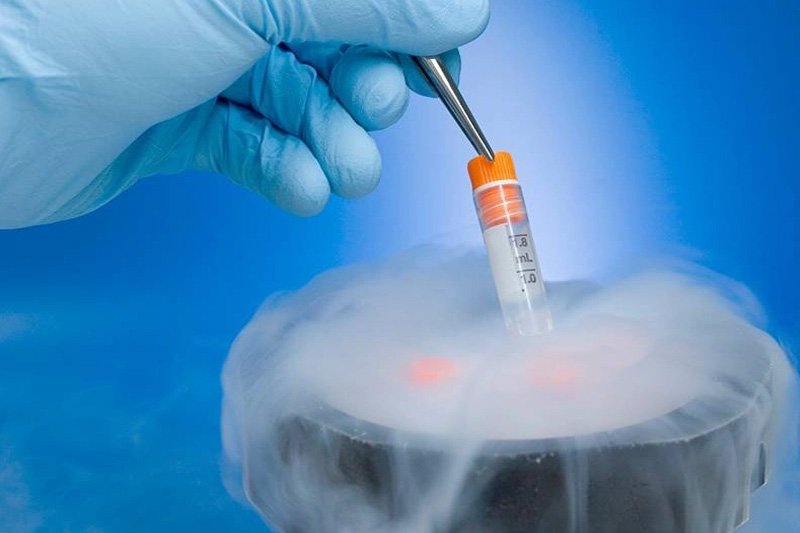
Services
Intrauterine Insemination (IUI) is a fertility treatment that involves placing sperm inside a woman’s uterus to facilitate fertilization. The aim of IUI is to increase the number of sperm that reach the Fallopian tubes and consequently increase the chance of fertilization.


IVF (In Vitro Fertilisation)
IVF(in vitro fertilization) is one of the most extensively known kinds of assisted reproductive technology (ART). IVF works by using a combination of medicines and surgical procedures to help sperm fertilize an egg, and help the fertilized egg implant in your uterus.
Surrogacy
Surrogacy is a method of assisted reproduction where intended parents work with a gestational surrogate who will carry and care for their baby(ies) until birth. Intended parents use surrogacy to start or grow their families when they can’t do so on their own.


Egg Freezing
Egg freezing, also known as mature oocyte cryopreservation, is a method used to preserve a woman’s reproductive potential. Eggs are harvested from your ovaries, frozen unfertilized and stored for later use. A frozen egg can be thawed, combined with sperm in a lab and implanted in your uterus (in vitro fertilization). However, only a small portion of eggs that are frozen, thawed and implanted result in the birth of a baby.
Fertility Treatment
Aurawomen helps you find the best treatment for your fertility issues. When you call us to discuss your fertility issues, our experts suggest you the best treatment according to your condition. With associations with leading fertility clinics and experts, Aurawomen helps you in getting the appropriate treatment for infertility. We recommend best clinics offering following treatments for treating infertility in both men and women.


Laproscopy
Diagnostic laparoscopy is a surgical procedure that doctors use to view a woman’s reproductive organs. A laparoscope, a thin viewing tube similar to a telescope, is passed through a small incision (cut) in the abdomen. Using the laparoscope, the doctor can look directly at the outside of the uterus, ovaries, fallopian tubes, and nearby organs. A female pelvic laparoscopy is often recommended when other diagnostic tests, such as ultrasound and X-ray, cannot confirm the cause of infertility.
Biopsy
A woman may be ovulating, but in some cases she may have a luteal defect or enlargement of the uterine lining. In an endometrial biopsy, a small sample of the woman’s uterine lining (endometrium) is removed. This biopsy is a measure to see whether ovulation has taken place. By performing a biopsy, healthcare providers can evaluate whether or not the uterine lining responds normally to estrogen and progesterone. The effects of estrogen and progesterone are measured by the adequate preparation of the uterine lining. An endometrial biopsy can also evaluate abnormal uterine bleeding, which is also generally reflective of hormone imbalances.


Hysteroscopy
Hysteroscopy is a procedure that allows your doctor to look inside your uterus in order to diagnose and treat causes of abnormal bleeding. Hysteroscopy is done using a hysteroscope, a thin, lighted tube that is inserted into the vagina to examine the cervix and inside of the uterus. Hysteroscopy can be either diagnostic or operative. Diagnostic hysteroscopy is used to diagnose problems of the uterus such as cause of infertility.
Blastocyst
A blastocyst is an embryo which has been left to develop until day 5 or 6 and presents a complex cellular structure formed by approximately 200 cells. The blastocyst phase is the development stage prior to implantation of the embryo in the mother’s uterus.
Transferring a blastocyst on day 5+ has the following advantages:
- It makes a better selection of embryos possible. Embryos which reach this stage offer a better implantation capacity due to the fact that they have overcome possible development hurdles which are frequently produced in the early stages. It is for that reason that we limit transfers to 1 blastocyst (or maximum 2), reducing the risk of multiple births.
- It allows a more physiological synchronisation between the embryonic phase and the responsiveness of the endometrium.


Embryo Freezing
Embryo freezing is a procedure that allows people to store embryos for later use. A person can also freeze eggs, which are not fertilized. An embryo forms after fertilization and after the cells start to divide. The process begins by using hormones and other medications to stimulate the production of potentially fertile eggs. A doctor then extracts the eggs from the ovaries, either for fertilizing in a lab or for freezing. Successful fertilization may lead to at least one healthy embryo. A doctor can then transfer the embryo to the womb, or uterus. If the treatment is successful, the embryo will develop. Fertilization often results in more than one embryo, and the doctor can freeze and preserve the remaining embryos. Contact Aurawomen now to get the most suitable treatment for infertility at the most reasonable prices across India.
Male fertility
Although some people still think of fertility as a & woman’s problem, in 20% of infertile couples, the problem is solely with the male partner. Infertility in a man may be the only reason that a couple can’t conceive, or it may simply add to the difficulties caused by infertility in his partner. So, it ‘s crucial that men get tested for fertility as well as women. It’s also important that men do it early. Though some guys may want to put off being tested — possibly to avoid embarrassment — early testing can spare their partners a great deal of unnecessary discomfort and expense. It’s also a good way to quickly narrow down potential problems. Aurawomen helps such couples in analyzing the cause of infertility and getting appropriate treatment for male infertility which includes



